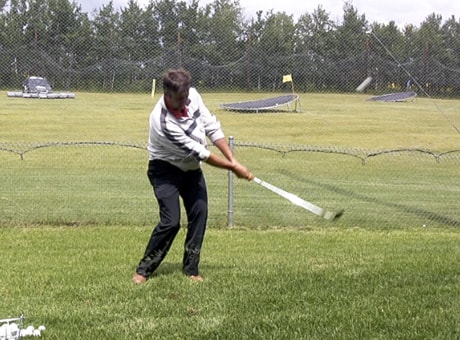“Up and down” is truly one of the happiest phrases in golf.
This phrase refers to hitting the shot on the green close to the hole and then making a one putt.
It’s guaranteed to lower your scores and make your round much more enjoyable.
Typically used and referred to when we are close to the green, getting your ball up and down does not happen nearly as often as we would like.
As we get closer to the green one would think that the shot should become easier.
The main reason is that your stroke is smaller and therefore we have fewer moving parts.
This is true in theory but most players have difficulty hitting what is referred to as a finesse shot which is typically one that is smaller than a normal swing.
As I have indicated in previous articles, almost 50 per cent of the game is played on or around the putting green. It seems that the closer to the green we get, the more shots we take.
This does not make sense because the closer we get, the easier the stroke should be and as a result, the easier the shot should be to execute.
Technically, this statement is correct. In reality most golfers have more difficulty executing the shot the closer they get to the green.
As a result, I hear stories of how golfers were beside the green in two or three strokes and then walked to the next hole writing a seven or an eight on the score card. The easiest shots can turn your round into a world of frustration.
One of the easiest strokes is the pitch shot.
This is a shot that is generally played 10-40 yards from the green.
Otherwise known as no-man’s land. I hear stories of golfers attempting to hit this shot and instead of pitching it up in the air and landing on the green, they hit behind the ball sending it a couple of feet, or nailing the ball in the forehead sending it over the green.
The most frustrating thing about doing this is that you are now faced with the same shot.
To properly execute this shot you need to follow a few rules, which include the stance, acceleration, ball position, tempo and finish position.
A pitch is a shot that is played within 40 yards of the green. The idea of the shot is to hit it up in the air, carry over the long grass, land the ball on the green and let it roll to the hole like a putt. Although slightly different in the set up, it is similar to a regular swing.
The swing is much smaller in size than the full swing therefore our feet width must be narrower. Position approximately 60 per cent of your weight on your front foot.
This will assist you in striking down on the ball. The ball should be positioned for the average golfer approximately the same position as for regular shot — slightly forward of the centre of your stance.
Now that you have taken your stance you are ready to swing. Distance is determined by how far back the club goes not at the speed at which you swing.
What most golfers will do is take the club to the top of their backswing and then either accelerate or decelerate to determine how far their ball will go. This is the most common mistake made for pitching and is the one that will cause you the majority of inconsistent hits.
When you’re in your setup position, imagine looking at a clock. Your left arm (for right handed golfers) is the small hand of the clock.
Swinging back to the 7 o’clock position will send the ball a certain distance, 8 o’clock a little further, 9 o’clock further yet and so on.
The distance you take the club back will determine how far the ball will travel.
One of the most common mistakes golfers make on a pitch shot, and any shot for that matter, is that they swing to the ball not through the ball.
What I mean by this is that as soon as you make contact, the swing ends.
Like any other aspect of the game, there is a finish position with pitching. In fact, if you don’t finish, the end result will be less than desirable.
A full finish position includes swinging to where your body or belt buckle faces your target.
All of your weight is on your front foot. Your back foot is up on your tip toe and the club is up by your shoulder.
The size of your backswing will determine if your hands and club will finish over your left shoulder (for right handed golfers).
Finally, tempo, tempo, tempo. The speed of your swing must be smooth back and then accelerate through to your finish position.
Too fast of a backswing will generally cause you to grip the club too tight and the end result will be less than desirable.
Implementing these key fundamentals when you are faced with a small pitch shot will assist you in solid contact, proper ball flight and lower scores.
Consult your local CPGA professional if you continue to have problems executing this shot.
Scott Bergdahl is the head professional at the Lakewood Golf Resort near Sylvan Lake.
